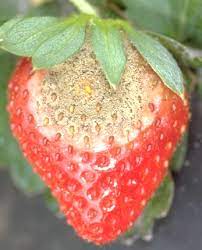By Clint Thompson

Botrytis gray mold is an annual disease of strawberry producers. It may continue to worsen the more resistant it becomes to certain fungicides.
Ed Sikora, professor and Extension plant pathologist in the Department of Entomology and Plant Pathology at Auburn University, said he and other colleagues have examined strawberry fields for more than a year. In about 80% of fields, botrytis was resistant to multiple classes of fungicides.
Growers still have options, however, Sikora said.
“This disease can be controlled with fungicides on a strict schedule. You need to get ahead of it,” Sikora said. “Captan’s always a nice product to add to your mix, but there’s also a number of other products to add to your chemistries that are available.”
Botrytis thrives in rainy, wet conditions, much like what most of Alabama has experienced this spring.

“It’s an annual problem in Alabama, a little more common when we have wet conditions like we had last year and in some parts this year,” Sikora said. “With botrytis gray mold, it is widespread and has numerous hosts. It survives on dead plant material. Free water and cool temperatures favor development, so right now, it’s ideal with the rain we’ve had in recent days.”
One of the key management strategies is to remove diseased strawberries from the field, which is not always done.
“Management (starts) with avoiding diseased transplants, which is hard to do and avoid allowing over-ripened fruit to sit in the field. That’s probably the biggest problem where growers have extended themselves more acres than they needed, and they can’t pick them fast enough. The fruit just start to rot in the field,” Sikora said. “What you’d like to do is remove and destroy any diseased fruit. You would like to take those fruit off the plant and then get them out of the field and bury them. I know a number of growers who have time to remove the fruit and throw them in the center of the row. But they leave them there. That’s still a source of inoculum.”










